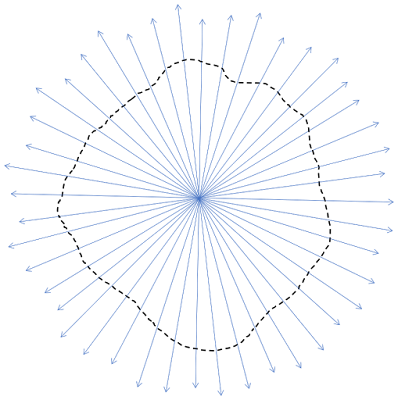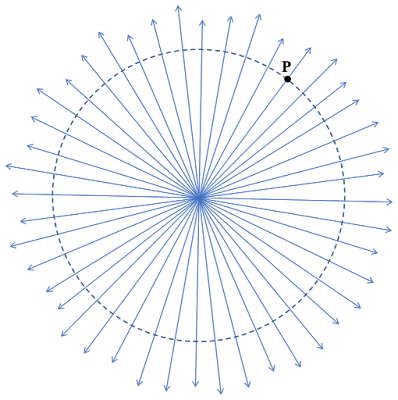Electric field
The interaction between charge \(Q\) and \(q\) is described by Coulomb's inverse-square law: \[ \vec{F}_{q} = \frac{1}{4 \pi \epsilon_{0}} \frac{Qq}{r^{2}} \hat{r}_{q} \] where \(\vec{F}_{q}\) is the force on charge \(q\) due to \(Q\) and \(\hat{r}\) is the unit vector along the position vector of \(q\) with respect to \(Q\). The electrostatic force on \(Q\) due to \(q\) is equal in magnitude but opposite in direction to \(\vec{F}_{q}\). Everything we need to know to study interactions between static charges is contained in the Coulomb's law. However, in its present form the Coulomb's law does not lend itself to efficient use. For instance, say we want to study the effect of charge \(Q\) on \(q\). We will here employ Coulomb's to figure out the magnitude and direction of the force on \(q\) due to \(Q\). If we replace \(q\) with a different charge, say, \(q'\), we will have to evaluate the Coulomb's law all over again! We will need to repeat

